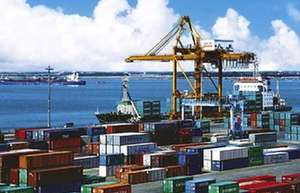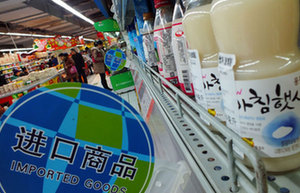China's GDP growth has slowed to 7.4 percent year-on-year in the first quarter, which is lower than the annual target of 7.5 percent, but slightly higher than general market expectations. It indicates the country is encountering some headwinds, but a string of factors still point to the resilience of the world's second-largest economy.
The market has expected a rate as low as 7.2 percent, compared with 7.7 percent in the first quarter of last year.
The real growth of 7.4 percent is certainly no cause for optimism. With weak domestic economic activities and slow recovery of the outside world, China is facing the dual challenges of feeble domestic and external demand while it has to hold back any massive stimulus programs since it would cause more distortions.
For example, in March, China registered poor trade data and growth of its M2, or broad measure of money supply that includes cash and all types of deposits, also dropped to the lowest level since 2001, leading to concern that the country would have to take more stimulus measures, such as increasing export rebate and cutting the banks' required reserve ratio, to boost the economy.
But as Premier Li Keqiang has made it clear, China is capable of maintaining a stable growth and is tolerant toward a growth rate slightly lower than the pre-set target of 7.5 percent.
If we look more closely at the already released data, such as trade and money supply, we would find that things are not that bad as to call for instant release of more stimulus policies.
On a real basis, analysts have estimated that China's exports actually improved in March to 12 percent from an average of 8 percent year-on-year during the previous two months, although its headline growth was a negative 6.6 percent. In last March, over-invoicing has inflated the export figures, pushing the base for measuring export growth this March.
Seen from the Export Leading Indicator compiled by China's General Administration of Customs, China's export prospects remain stable since the index climbed to 41.6 in the first quarter from 39.4 in the last quarter of 2013. Its reading in March, in particular, was on the rise.
Regarding money supply, the slow M2 growth — which was 12.1 percent — in March partially comes from the high base of last March, and it could gradually pick up from the second quarter and reach 13 percent for the whole of this year, according to a senior official of the central bank.
The more resilient job market also adds to confidence of policymakers in stabilizing the overall economy.
According to the latest calculation by the State Council's Development Research Center, each percentage point GDP growth in China now can create up to 1.6 million jobs, compared with 800,000 jobs in around 2000, meaning although the GDP growth slows, the economy could be creating more jobs.
Considering the lagging effect of the money supply in the first quarter and the implementation of the mini-stimulus programs, such as the shanty town renovation, released early this month, economic activities could pick up in the second quarter. Moreover, if the western economies continue to improve as expected, China could register higher GDP growth in the second quarter. It is too early to get pessimistic about the Chinese economy.
 |
 |
|
|
